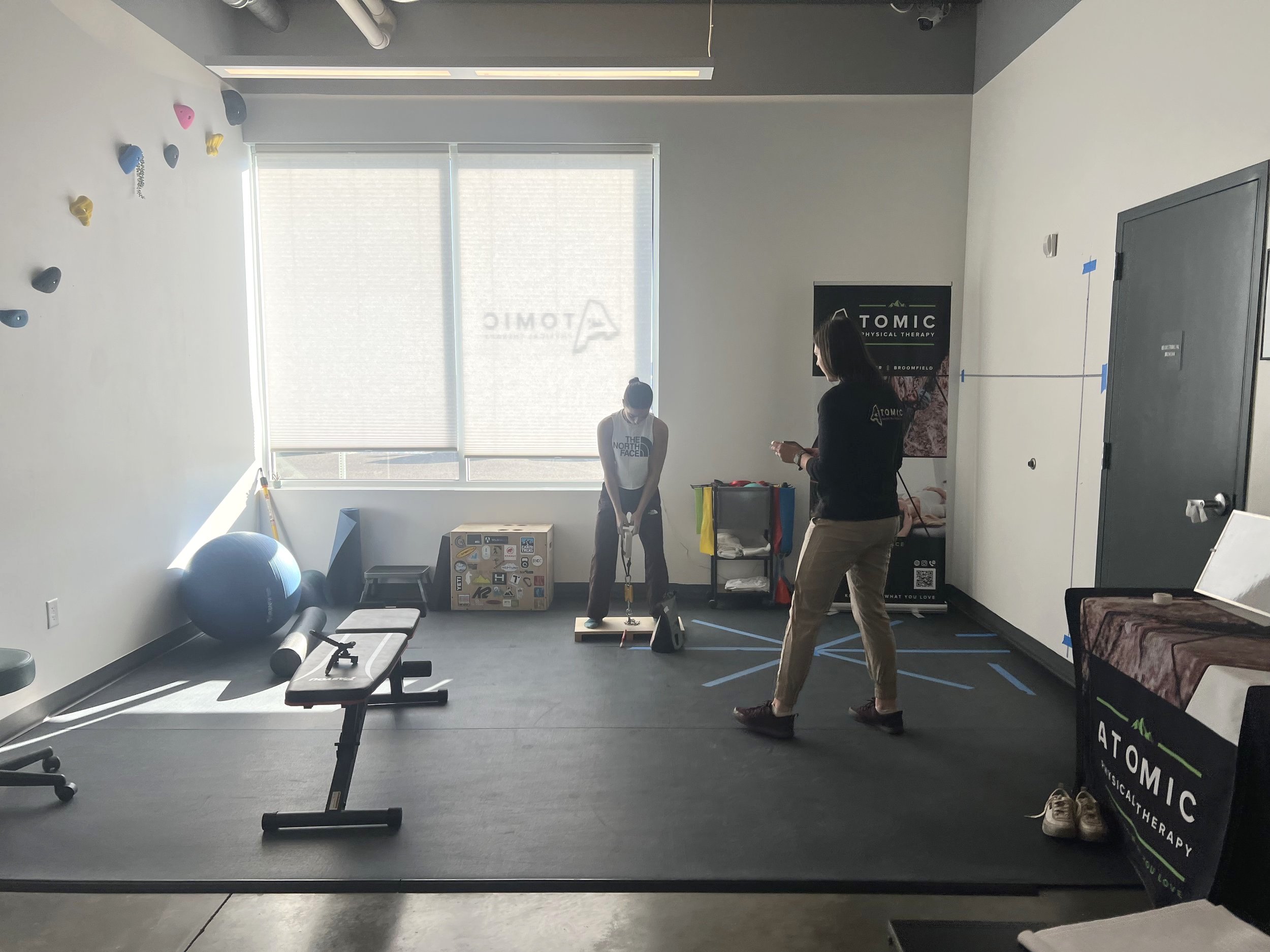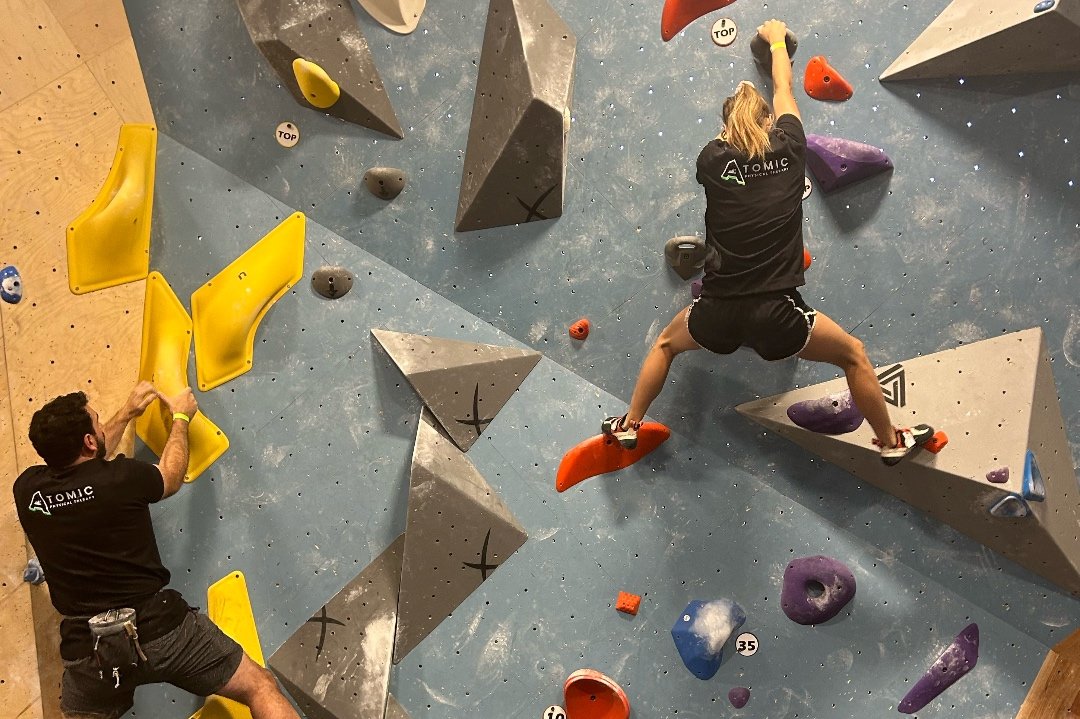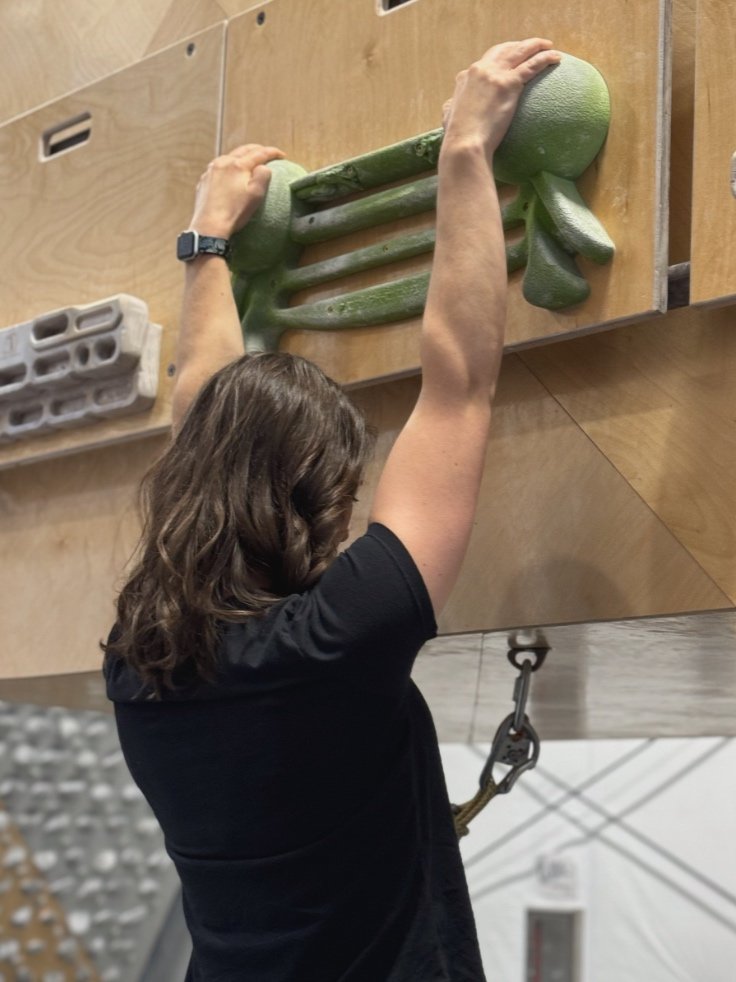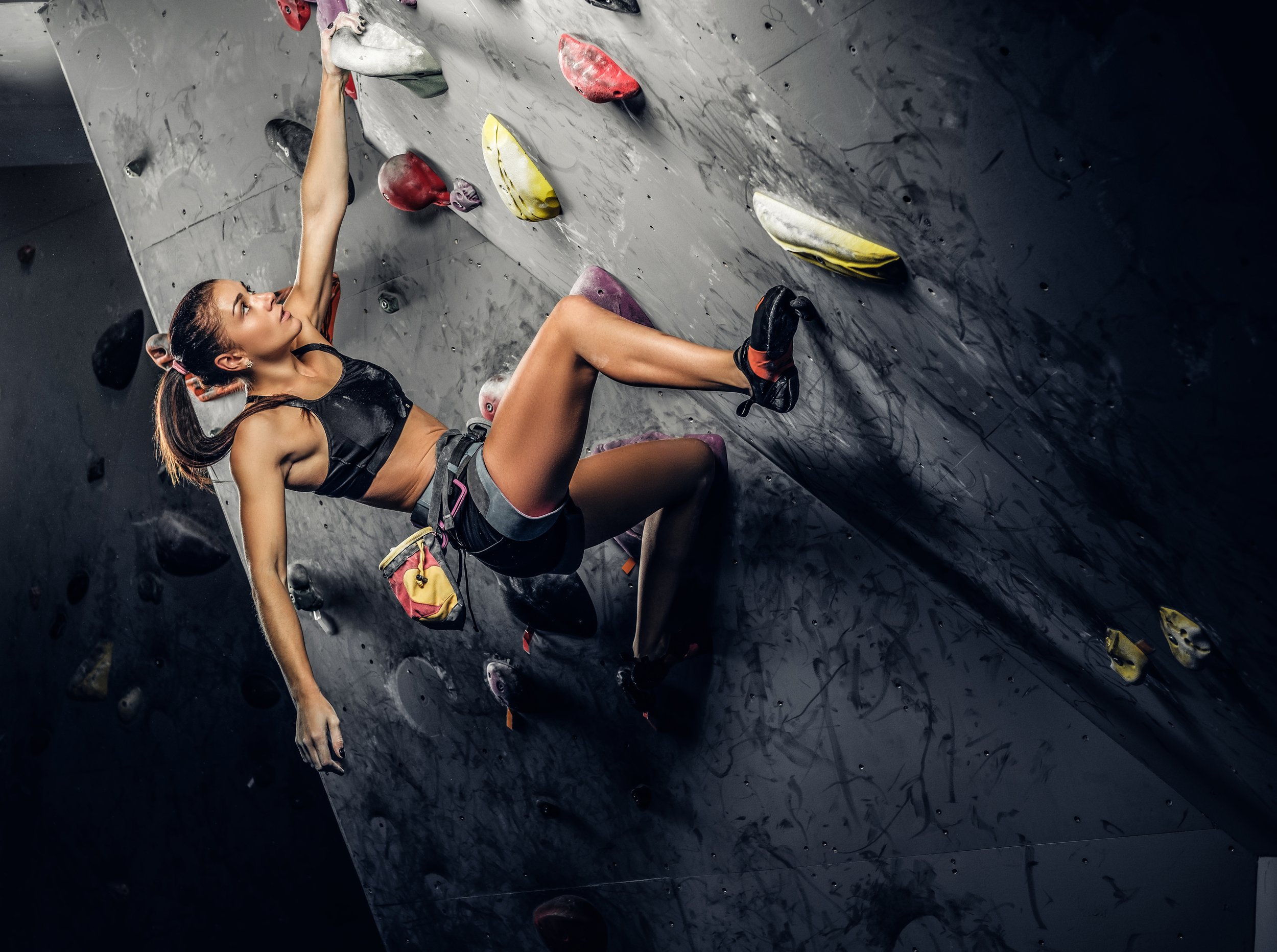
Climb Analysis at Atomic
A comprehensive total body climbing assessment
At Atomic Physical Therapy, we’ve developed a unique approach to optimizing athletic performance through our Atomic Performance Methodology. This method combines cutting-edge science, expert movement analysis, and physical therapy evaluation testing to help climbers minimize injury risk and perform at a higher level.
Our testing is a comprehensive, total body assessment designed to catch deficits in any major muscle groups and joints, as well as any right to left asymmetries. This includes off the wall strength, mobility, and performance testing.
Evidence-based assessments, backed by climbing specific research, have been developed by doctors of physical therapy who climb!
The Atomic Performance Methodology is our comprehensive framework for assessing and improving athletic movement. It integrates principles of biomechanics, functional strength, mobility, and sport-specific techniques to maximize performance and minimize injury risk.
Our methodology involves:
Data-Driven Analysis - precise movement assessments backed by evidence-based techniques.
Personalized Insights - customized recommendations based on your unique climbing style, goals, and physical needs.
Holistic Approach - a focus on the whole athlete—mindset, body mechanics, and long-term development.
This approach forms the backbone of our Climb Analysis, ensuring every climber receives a detailed analysis to improve their performance.
The Atomic Performance Methodology
How it works!
-

1. Initial Consultation
We begin with a discussion of your climbing history, goals, and any current pain or limitations. This helps us tailor the analysis to your unique needs, whether you’re working toward a project or addressing chronic discomfort. We identify areas where you want to improve, from specific techniques to overall strength and endurance.
-

2. Climb Analysis Testing
A comprehensive evaluation of your mobility, flexibility, strength, and stability. We evaluate your movement patterns both on and off the wall. Using advanced techniques and tools, we analyze how your body performs under climbing-specific demands, such as overhangs, crimps, and dynamic moves. We identify imbalances or restrictions that could limit your climbing performance.
-

3. Movement & Technique Review
We analyze your technique, focusing on efficiency, body positioning, and how you transition between moves. This includes feedback on foot placement, hip movement, and upper-body engagement. Optional: video analysis of your technique. Receive real-time feedback and corrections for climbing technique.
-

4. Quantitative Report
We provide a quantitative report with data showing strengths, weaknesses, and imbalances. The report allows you to discover areas of weakness and potential injury risk. The report includes recommendations for improvements. We discuss the implications of the analysis with you and guidance on next steps.
Assessments
Joint goniometry measure of joint range of motion to identify any deficits in mobility
Tension dynamometry using accurate force testing to assess strength for addressing imbalances
Climbing performance tests such as lock off endurance, finger strength, power slap
Objective Analysis - climbing specific strengths and weakness to identify imbalances in your training
Baseline Testing - works as a great tool for baseline testing going into a competitive season or while training for a project
Injury Prevention - identification of red flags to prevent injury. address movement patterns that may increase your risk of common climbing injuries, such as finger, shoulder, or elbow strain. Report can be utilized to determine readiness to climb in the case of present or future injury
Performance Optimization - learn how to move more efficiently, conserve energy, and maximize your strength on every climb
Benefits
Get started with a free Atomic PT consultation
There’s no commitment, pressure, or obligation











